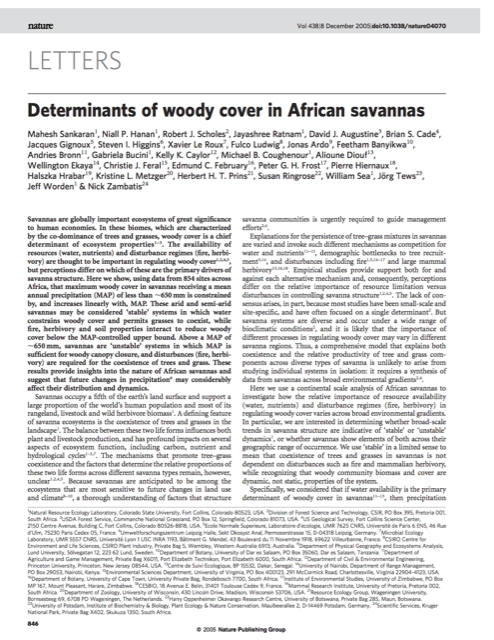Determinants of woody cover in African savannnas: A continental scale analysis

Sankaran, M. Hanan, N., Scholes, R.J., and 24 others including K.K. Caylor (2005) “Determinants of woody cover in African savannnas: A continental scale analysis” Nature, doi:10.1038/nature04070.
Savannas are globally important ecosystems of great significance to human economies. In these biomes, which are characterized by the co-dominance of trees and grasses, woody cover is a chief determinant of ecosystem properties(1-3). The availability of resources ( water, nutrients) and disturbance regimes ( fire, herbivory) are thought to be important in regulating woody cover(1,2,4,5), but perceptions differ on which of these are the primary drivers of savanna structure.
Here we show, using data from 854 sites across Africa, that maximum woody cover in savannas receiving a mean annual precipitation (MAP) of less than similar to 650 mm is constrained by, and increases linearly with, MAP. These arid and semi-arid savannas may be considered ‘stable’ systems in which water constrains woody cover and permits grasses to coexist, while fire, herbivory and soil properties interact to reduce woody cover below the MAP-controlled upper bound. Above a MAP of similar to 650 mm, savannas are ‘unstable’ systems in which MAP is sufficient for woody canopy closure, and disturbances ( fire, herbivory) are required for the coexistence of trees and grass. These results provide insights into the nature of African savannas and suggest that future changes in precipitation(6) may considerably affect their distribution and dynamics.
